ART NEWS:Oct.03
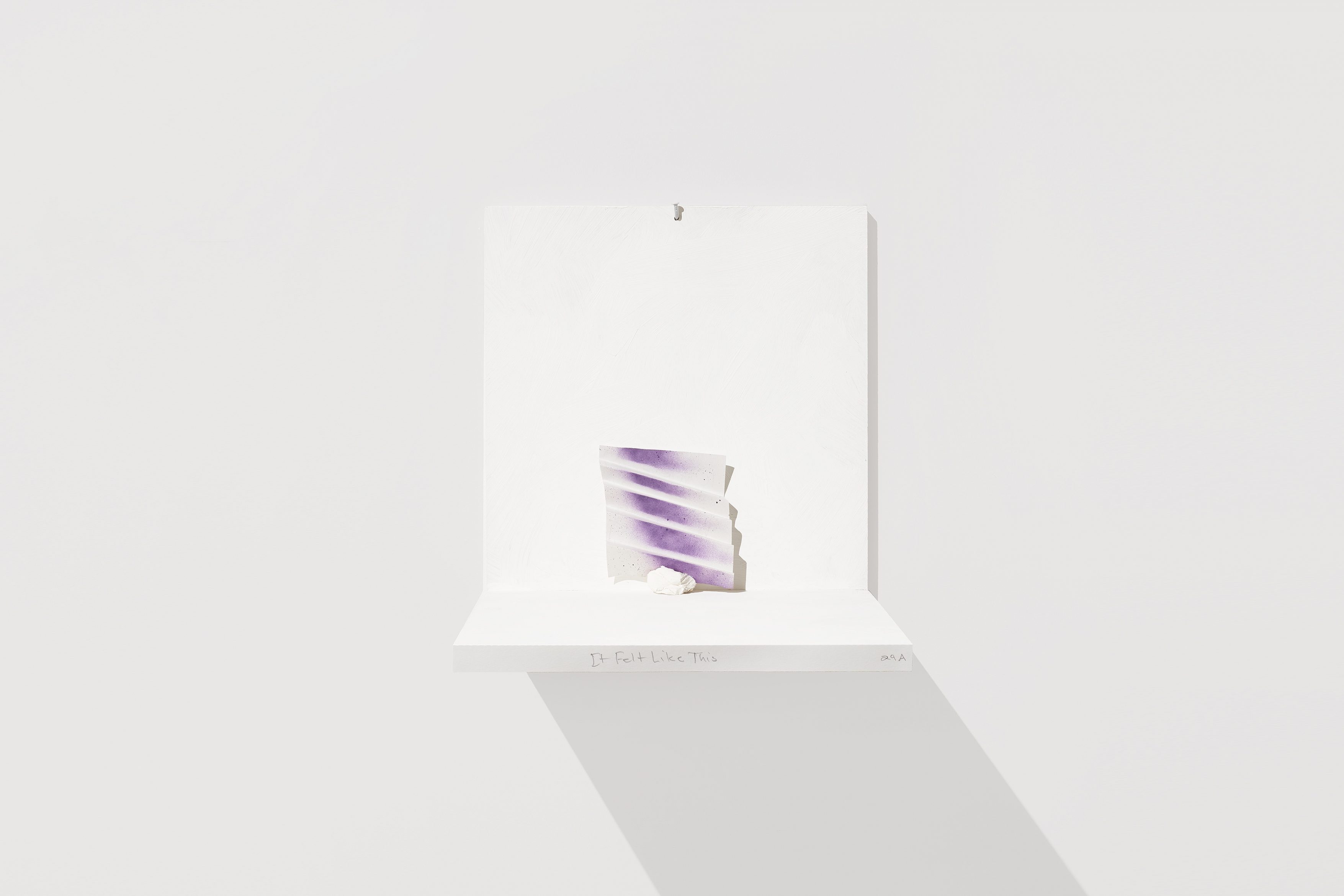 Titled “TheStars” Richard Tuttle’s new body of sculptures for Modern Art were made during the summer of 2019 at his home and studio in Mount Desert, Maine. The works are small in scale, each sculpture’s spontaneous construction belying an unparalleled potency and elegance. As such, the exhibition bears a clear resemblance to some of Tuttle’s early work from the 1970s, such as his iconic “Rope Piece” (1974), which came to typify his bold approach to scale. As well as in their size, the modest, simple materials employed in “TheStars” share the same essence characteristic of the sculptural language used throughout Tuttle’s career. Made predominantly from plywood, paint, paper and metal wire, each work sits atop its own hand-made shelf, annotated by Tuttle with its particular title, and secured to the wall with a single nail. Thus in scale, material and formal arrangement, the exhibition marks a new stage in the continued evolution of Tuttle’s distinctive vocabulary whilst also reflecting something of its origins. This new series – like all Tuttle’s work – remains deeply sensitised to the interplay between the most granular, material experiences and a sense of an immense, perhaps cosmic, ambitious unknowability. Info: Modern Art, 7 Bury Street, London, Duration: 1/10-21/11/20, Days & Hours: Wed-Sat 12:00-17:00 (To book your visit, please follow this link), https://modernart.net
Titled “TheStars” Richard Tuttle’s new body of sculptures for Modern Art were made during the summer of 2019 at his home and studio in Mount Desert, Maine. The works are small in scale, each sculpture’s spontaneous construction belying an unparalleled potency and elegance. As such, the exhibition bears a clear resemblance to some of Tuttle’s early work from the 1970s, such as his iconic “Rope Piece” (1974), which came to typify his bold approach to scale. As well as in their size, the modest, simple materials employed in “TheStars” share the same essence characteristic of the sculptural language used throughout Tuttle’s career. Made predominantly from plywood, paint, paper and metal wire, each work sits atop its own hand-made shelf, annotated by Tuttle with its particular title, and secured to the wall with a single nail. Thus in scale, material and formal arrangement, the exhibition marks a new stage in the continued evolution of Tuttle’s distinctive vocabulary whilst also reflecting something of its origins. This new series – like all Tuttle’s work – remains deeply sensitised to the interplay between the most granular, material experiences and a sense of an immense, perhaps cosmic, ambitious unknowability. Info: Modern Art, 7 Bury Street, London, Duration: 1/10-21/11/20, Days & Hours: Wed-Sat 12:00-17:00 (To book your visit, please follow this link), https://modernart.net
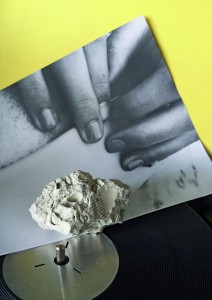 Maya Schweizer’s exhibition “Voices” is the most comprehensive solo presentation in a museum of Schweizer’s work to date. The museum presents a selection of ten films from the past 14 years and produced one new work, for which Schweizer made a number of visits to Munich to shoot. In the film “Voices and Shells”, she combined, in both image and sound, footage of her own and appropriated material. Initially, she did research from the sewers—he innards of the city—in order to obtain a point of reference and imagine a memory of unseen images.Central to Maya Schweizer’s experimental video films are issues of history, identity and memory. The short film is her medium of reflection, her vocabulary for telling a story and creating an impression of reality/realities. Urban spaces as interfaces of individual and collective actions and behaviors often serve as the starting point. In examining those sites, she uncovers social realities, inscribed narratives and superimposed history/histories. Info: Curator: Dr. Sabine Schmid, Museum Villa Stuck, Prinzregentenstrasse 60, Munich, Duration: 22/10/20-24/1/21, Days & Hours: Tue-Sun 11:00-18:00, www.villastuck.de
Maya Schweizer’s exhibition “Voices” is the most comprehensive solo presentation in a museum of Schweizer’s work to date. The museum presents a selection of ten films from the past 14 years and produced one new work, for which Schweizer made a number of visits to Munich to shoot. In the film “Voices and Shells”, she combined, in both image and sound, footage of her own and appropriated material. Initially, she did research from the sewers—he innards of the city—in order to obtain a point of reference and imagine a memory of unseen images.Central to Maya Schweizer’s experimental video films are issues of history, identity and memory. The short film is her medium of reflection, her vocabulary for telling a story and creating an impression of reality/realities. Urban spaces as interfaces of individual and collective actions and behaviors often serve as the starting point. In examining those sites, she uncovers social realities, inscribed narratives and superimposed history/histories. Info: Curator: Dr. Sabine Schmid, Museum Villa Stuck, Prinzregentenstrasse 60, Munich, Duration: 22/10/20-24/1/21, Days & Hours: Tue-Sun 11:00-18:00, www.villastuck.de
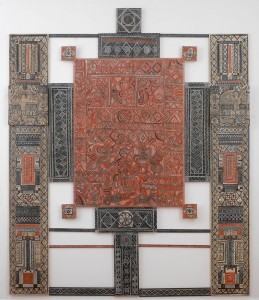 Alekos Kyrarinis’ latest works that are on show in his solo exhibition “things visible and invisible”, mark the end of a two-year period of prolific artistic production. 28 large and small-scale works of egg tempera on wood, 10 mixed technique drawings on paper, 5 sculptures in the round or overpainted Tinian marble reliefs (the island of Tinos is the artist’s birthplace) and 1 video clip for an excerpt of the composition by Giorgos Koumendakis, “The Pedal Tone of a Child”, which is the outcome of the cooperation and mutual respect between the composer and the painter. Through the works of this exhibition, works that encapsulate all the characteristics of his artistry, Kyrarinis complements, extends and further refines a career in painting of almost twenty years. Almost always, his subjects include portraits of Angels or Angels defeating evil or Saints-knights spearing dragons, in other words, his subject is essentially one: the conflict between Good and Evil, the former’s domination over the latter. In essence, it is an allegory of human passions. Info: Curator: Nikolaos Paisios, Citronne Gallery, 19 Patriarchou Ioakim, 4th floor, Athens, Duration: 22/10-31/12/20, Days & Hours: Tue & Thu-Fri 11:00-20:00, Wed & Sat 11:00-16:00, https://citronne.com
Alekos Kyrarinis’ latest works that are on show in his solo exhibition “things visible and invisible”, mark the end of a two-year period of prolific artistic production. 28 large and small-scale works of egg tempera on wood, 10 mixed technique drawings on paper, 5 sculptures in the round or overpainted Tinian marble reliefs (the island of Tinos is the artist’s birthplace) and 1 video clip for an excerpt of the composition by Giorgos Koumendakis, “The Pedal Tone of a Child”, which is the outcome of the cooperation and mutual respect between the composer and the painter. Through the works of this exhibition, works that encapsulate all the characteristics of his artistry, Kyrarinis complements, extends and further refines a career in painting of almost twenty years. Almost always, his subjects include portraits of Angels or Angels defeating evil or Saints-knights spearing dragons, in other words, his subject is essentially one: the conflict between Good and Evil, the former’s domination over the latter. In essence, it is an allegory of human passions. Info: Curator: Nikolaos Paisios, Citronne Gallery, 19 Patriarchou Ioakim, 4th floor, Athens, Duration: 22/10-31/12/20, Days & Hours: Tue & Thu-Fri 11:00-20:00, Wed & Sat 11:00-16:00, https://citronne.com
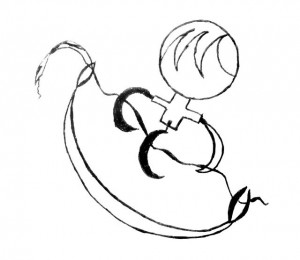 The exhibition “From the Volcano to the Sea. The feminist group Le Nemesiache in 1970s and 1980s Naples” explores the Italian feminist collective Le Nemesiache, active in Naples in the 1970s and 1980s. Founded by philosopher, artist and writer Lina Mangiacapre in 1970, Le Nemesiache was an open group of exclusively female participants. Together, they constructed a “different daily life,” reclaiming mythology as an embodied practice of feminist transformation. For the first time the group’s archive is presented in an exhibition that dwells upon their expansive work across film, performance and activism. Purposefully blurring the lines between art and politics, their ritualistic practices were strongly embedded in the natural and supernatural landscape of Naples, from its volcanic fumes to its archaeological ruins. The audience is invited into Le Nemesiache’s world through original documents and photographs, poetry, films, collages, costumes and textiles. Info: Curator: Giulia Damiani, Sara Giannini and Arnisa Zeqo, Rongwrong, Binnen Bantammerstraat 2, Amsterdam, Duration: 23/10/20-17/1/21, Fri-Sat 14:00-18:00, www.rongwrong.org
The exhibition “From the Volcano to the Sea. The feminist group Le Nemesiache in 1970s and 1980s Naples” explores the Italian feminist collective Le Nemesiache, active in Naples in the 1970s and 1980s. Founded by philosopher, artist and writer Lina Mangiacapre in 1970, Le Nemesiache was an open group of exclusively female participants. Together, they constructed a “different daily life,” reclaiming mythology as an embodied practice of feminist transformation. For the first time the group’s archive is presented in an exhibition that dwells upon their expansive work across film, performance and activism. Purposefully blurring the lines between art and politics, their ritualistic practices were strongly embedded in the natural and supernatural landscape of Naples, from its volcanic fumes to its archaeological ruins. The audience is invited into Le Nemesiache’s world through original documents and photographs, poetry, films, collages, costumes and textiles. Info: Curator: Giulia Damiani, Sara Giannini and Arnisa Zeqo, Rongwrong, Binnen Bantammerstraat 2, Amsterdam, Duration: 23/10/20-17/1/21, Fri-Sat 14:00-18:00, www.rongwrong.org
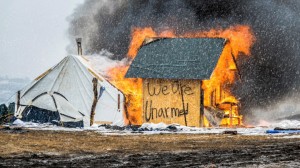 Cyrill Lachauer develops his extensive projects on long journeys, and delves deeply into the local cultures of the places he visits. For the exhibition by the Sammlung Goetz in the former air-raid shelter of Haus der Kunst, Lachauer has created a new multi-part installation, which includes films, videos, photographs and texts, as a dystopian development to the utopian spaces depicted in his last film “Dodging Raindrops – A Separate Reality.” The artist deals with the idea of land in various forms. Land can signify home and provide roots, or refer to a nourishing piece of earth. It can also, however, lead to inclusion or exclusion when it represents the idea of nationhood. Land can be owned or lived with. It can be taken away, destroyed, and made inaccessible to others. In “I am not sea, I am not land” we encounter a US American who has fled to Berlin to escape a long prison sentence, three diamond seekers in South Africa, a gay park worker in Yosemite National Park and people performing demonic Twelfth Night rituals in the alpine region. Lachauer does not assume the role of the distanced observer hidden behind the camera, but rather questions his own position by exploring socio-political issues concerning gender, identity, social class and nationhood. Info: Haus Der Kunst, Goetz Collection, Prinzregentenstraße 1, Munich, Duration: 23/10/20-11/4/21, Days & Hours: Thu 10:00-22;00, Fri-Sat 10:00-20:00, Sun 10:00-18:00, https://hausderkunst.de
Cyrill Lachauer develops his extensive projects on long journeys, and delves deeply into the local cultures of the places he visits. For the exhibition by the Sammlung Goetz in the former air-raid shelter of Haus der Kunst, Lachauer has created a new multi-part installation, which includes films, videos, photographs and texts, as a dystopian development to the utopian spaces depicted in his last film “Dodging Raindrops – A Separate Reality.” The artist deals with the idea of land in various forms. Land can signify home and provide roots, or refer to a nourishing piece of earth. It can also, however, lead to inclusion or exclusion when it represents the idea of nationhood. Land can be owned or lived with. It can be taken away, destroyed, and made inaccessible to others. In “I am not sea, I am not land” we encounter a US American who has fled to Berlin to escape a long prison sentence, three diamond seekers in South Africa, a gay park worker in Yosemite National Park and people performing demonic Twelfth Night rituals in the alpine region. Lachauer does not assume the role of the distanced observer hidden behind the camera, but rather questions his own position by exploring socio-political issues concerning gender, identity, social class and nationhood. Info: Haus Der Kunst, Goetz Collection, Prinzregentenstraße 1, Munich, Duration: 23/10/20-11/4/21, Days & Hours: Thu 10:00-22;00, Fri-Sat 10:00-20:00, Sun 10:00-18:00, https://hausderkunst.de
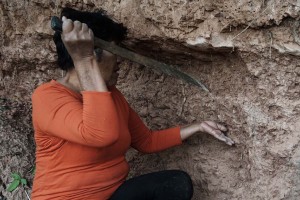 The exhibition project “La Escucha y los Vientos-Narratives and Inscriptions of the Gran Chaco” began its journey in Tartagal, a small city in the far north of Argentina. The city has 80,000 inhabitants, including seven communities of pueblos originarios and non-indigenous people of diverse origins and backgrounds. In this territory, a border enclave where present and past coexist, memories and resistance entwine. The confrontation between different ways of understanding nature implies a dispute for the future—should it be treated as a productive resource or as a whole of which human beings are part? The exhibition brings together craftswomen, artists, communicators and researchers. Engaging in a dialogue about diverse forms of knowledge and practice, they propose that recognition and understanding are implicit in processes of decolonization. Women are the main actors in this scenario of open questions. They use earth materials to create forms and discourses; they raise spoken words and translate the language of living beings and that of their ancestors. They know that their ancestor’s voices are carried by the winds. In this project, we present fragments of these activities and their material outcomes: textiles, ceramics, drawings, soundscapes and audiovisual pieces. Info: Curator: Andrea Fernández, ifa-Galerie Berlin, Linienstraße 139/140, Berlin, Duration: 23/10/20-24/1/21, Days & Hours: Tue-Sun 14:00-18:00, www.ifa.de, www.untietotie.org
The exhibition project “La Escucha y los Vientos-Narratives and Inscriptions of the Gran Chaco” began its journey in Tartagal, a small city in the far north of Argentina. The city has 80,000 inhabitants, including seven communities of pueblos originarios and non-indigenous people of diverse origins and backgrounds. In this territory, a border enclave where present and past coexist, memories and resistance entwine. The confrontation between different ways of understanding nature implies a dispute for the future—should it be treated as a productive resource or as a whole of which human beings are part? The exhibition brings together craftswomen, artists, communicators and researchers. Engaging in a dialogue about diverse forms of knowledge and practice, they propose that recognition and understanding are implicit in processes of decolonization. Women are the main actors in this scenario of open questions. They use earth materials to create forms and discourses; they raise spoken words and translate the language of living beings and that of their ancestors. They know that their ancestor’s voices are carried by the winds. In this project, we present fragments of these activities and their material outcomes: textiles, ceramics, drawings, soundscapes and audiovisual pieces. Info: Curator: Andrea Fernández, ifa-Galerie Berlin, Linienstraße 139/140, Berlin, Duration: 23/10/20-24/1/21, Days & Hours: Tue-Sun 14:00-18:00, www.ifa.de, www.untietotie.org
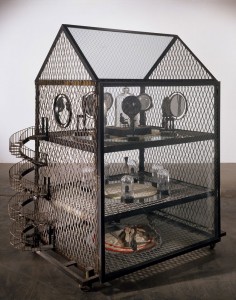 The exhibition “00s. The 2000s in the Cranford Collection” focuses on this as yet unexplored decade, which has still to be fully defined. For this reason, the works in the exhibition are presented chronologically. A timeline will chart the key events of this period and connect them to paintings, drawings, photographs, sculptures and videos from this prestigious collection. The exhibition offers a reading of the world through art (or of art through the world) with the aim of teasing out an image of a decade which remains loosely defined, and of establishing whether a coherent relationship emerges between works whose only apparent connection is the era in which they were created. By placing the emphasis on volume (with approximately one hundred exhibited artworks), the range of mediums, as well as the diversity of the artists’ ages and nationalities, the exhibition will establish a dialogue between art and topical issues, and seek to reveal how the 2000s have transformed our global cultures, geopolitics and economy, as well as our ecological awareness. Info: Vincent Honoré, Victor Secretan, Anya Harrison, Curatorial Assistant Justine Vic, MO.CO. Hôtel des collections, 13 rue de la république, Montpellier, Duration: 24/10/20-31/1/21, Days & Hours: Tue-Sun 12:00-19:00, www.moco.art
The exhibition “00s. The 2000s in the Cranford Collection” focuses on this as yet unexplored decade, which has still to be fully defined. For this reason, the works in the exhibition are presented chronologically. A timeline will chart the key events of this period and connect them to paintings, drawings, photographs, sculptures and videos from this prestigious collection. The exhibition offers a reading of the world through art (or of art through the world) with the aim of teasing out an image of a decade which remains loosely defined, and of establishing whether a coherent relationship emerges between works whose only apparent connection is the era in which they were created. By placing the emphasis on volume (with approximately one hundred exhibited artworks), the range of mediums, as well as the diversity of the artists’ ages and nationalities, the exhibition will establish a dialogue between art and topical issues, and seek to reveal how the 2000s have transformed our global cultures, geopolitics and economy, as well as our ecological awareness. Info: Vincent Honoré, Victor Secretan, Anya Harrison, Curatorial Assistant Justine Vic, MO.CO. Hôtel des collections, 13 rue de la république, Montpellier, Duration: 24/10/20-31/1/21, Days & Hours: Tue-Sun 12:00-19:00, www.moco.art
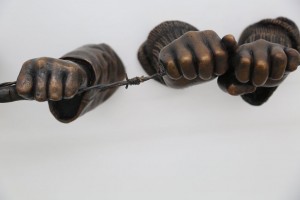 “Barring Freedom” features works by twenty US-based artists that challenge how individuals see and understand USA’s prison industrial complex—a nexus of policing, surveillance, detention, and imprisonment. While this group show was conceptualized before the current crises, first COVID-19, with its ongoing and unequal effects, and then the brutal onslaught of police killings of Black people in the United States, these recent events have brought into sharp relief the horrific consequences of mass incarceration in the US, which has the highest number of jailed individuals across developed nations. With more than two million incarcerated individuals, a majority Black or brown and virtually all from poor communities, the prison industrial complex reveals a troubled nation. Barring Freedom considers the strategies artists use to reveal this racist worldview and the social problems that it effectively creates and obscures. It also highlights alternative visions and future dreamscapes offered by these artists as a counter to the brutalities of our current reality. Info: Curators: Rachel Nelson and Alexandra Moore, San Jose Museum of Art, 110 South Market Street, San Jose, Duration: 30/10/20-25/4/21, Days & Hours: Fri-Sun 11:00-17:00, https://sjmusart.org
“Barring Freedom” features works by twenty US-based artists that challenge how individuals see and understand USA’s prison industrial complex—a nexus of policing, surveillance, detention, and imprisonment. While this group show was conceptualized before the current crises, first COVID-19, with its ongoing and unequal effects, and then the brutal onslaught of police killings of Black people in the United States, these recent events have brought into sharp relief the horrific consequences of mass incarceration in the US, which has the highest number of jailed individuals across developed nations. With more than two million incarcerated individuals, a majority Black or brown and virtually all from poor communities, the prison industrial complex reveals a troubled nation. Barring Freedom considers the strategies artists use to reveal this racist worldview and the social problems that it effectively creates and obscures. It also highlights alternative visions and future dreamscapes offered by these artists as a counter to the brutalities of our current reality. Info: Curators: Rachel Nelson and Alexandra Moore, San Jose Museum of Art, 110 South Market Street, San Jose, Duration: 30/10/20-25/4/21, Days & Hours: Fri-Sun 11:00-17:00, https://sjmusart.org
![]() A renewed sensibility to the multiplicity of natural forms, always a source of interest for artists, writers, and scientists of every period, has for some time pervaded the works proposed by several contemporary artists, especially young ones. In the continuous becoming of Nature as in the dynamics ruling its unceasing mutations and transformations, they discern a wealth of inspirations from which they can draw, giving rise to a broad range of images, reflections, and formal solutions, trying out new creative processes. The group exhibition “Oltrenatura” explores and connects the latest experiments and works of four artists, Giuseppe Adamo, Yojiro Imasaka, Silvia Infranco, Quayola, generating the idea of a crystalized, transformed, manipulated or expressly recreated Nature: an indirect reflection of the new reality arising through images and forms that, highlighting the constitutive and developing process of the transformations and changes under way, place themselves beyond Nature itself, becoming “something else” and appropriating new meanings. Info: Curator: Davide Sarchioni, Marignana Arte Dorsoduro 141 Rio Terà dei Catecumeni, Venice, Duration: 31/10/20-6/2/21, Days & Hours: Thu-Sat 11:30-19:00, www.marignanaarte.it
A renewed sensibility to the multiplicity of natural forms, always a source of interest for artists, writers, and scientists of every period, has for some time pervaded the works proposed by several contemporary artists, especially young ones. In the continuous becoming of Nature as in the dynamics ruling its unceasing mutations and transformations, they discern a wealth of inspirations from which they can draw, giving rise to a broad range of images, reflections, and formal solutions, trying out new creative processes. The group exhibition “Oltrenatura” explores and connects the latest experiments and works of four artists, Giuseppe Adamo, Yojiro Imasaka, Silvia Infranco, Quayola, generating the idea of a crystalized, transformed, manipulated or expressly recreated Nature: an indirect reflection of the new reality arising through images and forms that, highlighting the constitutive and developing process of the transformations and changes under way, place themselves beyond Nature itself, becoming “something else” and appropriating new meanings. Info: Curator: Davide Sarchioni, Marignana Arte Dorsoduro 141 Rio Terà dei Catecumeni, Venice, Duration: 31/10/20-6/2/21, Days & Hours: Thu-Sat 11:30-19:00, www.marignanaarte.it
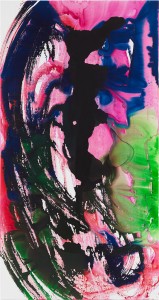 New paintings and works on paper are on show in Katharina Grosse’ exhibition “Separatrix”. Grosse embraces the events that occur as she paints, opening up surfaces and spaces to chance. In massive in situ paintings, where she uses a spray gun to propel unmixed color over objects, rooms, buildings, and even entire landscapes—and autonomous works on canvas, paper, and sculptural supports, she stylizes gesture as a spontaneous mark of personal agency. In July 2020, Grosse started working in a new purpose-built studio in a remote coastal area in northern New Zealand, where she spends several months each year. There, secluded in nature, she began a new body of work, imbuing the medium of watercolor with the directness and immediacy of her spray paintings. Envisaging the blank sheet of paper as a topographical record, Grosse experimented with a wet-on-wet technique using vibrant pigments, allowing them to swim and intermingle across the surface, leaving behind iridescent pools and blooms. After returning to her Berlin studio, she transferred what she terms the “consequences” of these watercolors to a series of large-scale paintings, setting the canvas horizontally, adding dilute acrylics using a brush, and then tilting the support to produce multidirectional drips and currents of color as a secondary gesture. Info: Gagosian Gallery, Via Francesco Crispi 16, Rome, Duration: 31/10-12/12/20, Days & Hours: Mon-Fri 10:00-18:00 (by appointment only), https://gagosian.com
New paintings and works on paper are on show in Katharina Grosse’ exhibition “Separatrix”. Grosse embraces the events that occur as she paints, opening up surfaces and spaces to chance. In massive in situ paintings, where she uses a spray gun to propel unmixed color over objects, rooms, buildings, and even entire landscapes—and autonomous works on canvas, paper, and sculptural supports, she stylizes gesture as a spontaneous mark of personal agency. In July 2020, Grosse started working in a new purpose-built studio in a remote coastal area in northern New Zealand, where she spends several months each year. There, secluded in nature, she began a new body of work, imbuing the medium of watercolor with the directness and immediacy of her spray paintings. Envisaging the blank sheet of paper as a topographical record, Grosse experimented with a wet-on-wet technique using vibrant pigments, allowing them to swim and intermingle across the surface, leaving behind iridescent pools and blooms. After returning to her Berlin studio, she transferred what she terms the “consequences” of these watercolors to a series of large-scale paintings, setting the canvas horizontally, adding dilute acrylics using a brush, and then tilting the support to produce multidirectional drips and currents of color as a secondary gesture. Info: Gagosian Gallery, Via Francesco Crispi 16, Rome, Duration: 31/10-12/12/20, Days & Hours: Mon-Fri 10:00-18:00 (by appointment only), https://gagosian.com
